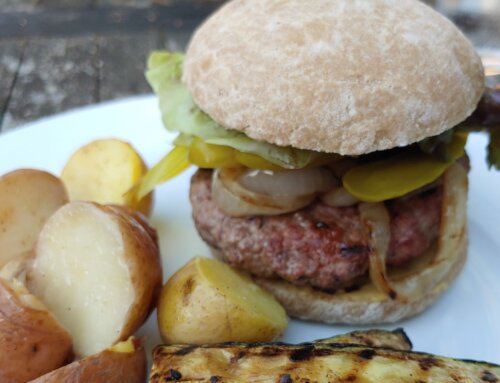Okay, I went all in on the very basic-basic starting point of all recipes—at least one ingredient and something to do with it—in this earlier post.
Beyond the ingredient list and cooking method, there are three other key things most recipes will have.
- You could leave readers guessing as to the name of your creation, but recipes are no place for mystery…so you’ll give that delicious thing a title.
- Headnotes, sure, they’re technically optional. Space limitations can sometimes dictate otherwise, but most recipes include some intro text for a wide range of good reasons. Even if just a sentence or two.
- And you could figure they should be able to judge how much the recipe’s going to make, but offering a yield removes another layer of mystery for the home cook. I’m surprised that I occasionally see recipes without a yield.
As a product of this recipe-rabbit-hole exploration I’ve been on for a few years, these five elements–title, headnote, ingredients, method, yield–represent thousands of words’ worth of chapter content that I’ve drafted for a book about the art and craft of writing recipes, which I hope will see the light of day before long.
It may not seem like there would be all that much to say about each. But the more I tune into the nitty-gritty of different approaches to recipe writing—from eloquent, reliable experts to content that leaves a great deal to be desired—the more I realize how much there is to consider relative to these distinct recipe parts. I think that’s a big part of why I’ve been so fascinated and energized by this experience.
Each of these will get more attention in future posts, but in brief overview:
Title: Simple without being overly generic, descriptive without being a laundry-list of every element. One example: Herbed Biscuits with Smoked Salmon does the job well; Chive and Parsley Biscuits Filled with Smoked Salmon, Crème Fraîche and Lemon is overkill.
Headnote: An opportunity to share any number of countless bits of valuable and interesting information with the reader. From the practical (warn of overnight marination time, offer alternate ingredients), to general insights (do-ahead options, what to serve alongside), to more personal notes about what inspired the recipe, who you learned it from.
Yield: Number of servings is generally, if not most always, preferable to volume or unit measures. That is, skip 2 quarts of soup, 1 pitcher of punch, 1 cake and let folks know how many servings they should get, even if it’s just a range. With exception of things like cookies and crackers, when the number made is (often in dozens) fine.
Done well and approached thoughtfully, each recipe element contributes to the positive experience we recipe writers hope home cooks will have with our recipes. Half-hearted efforts, lack of consistency or attention to detail and simply incomplete or erroneous information not only erode the potential for success, these poorly-written recipes likely encourage the reader to look elsewhere next time they’re in search of a recipe. It pays to not take any part of recipe writing too lightly.




